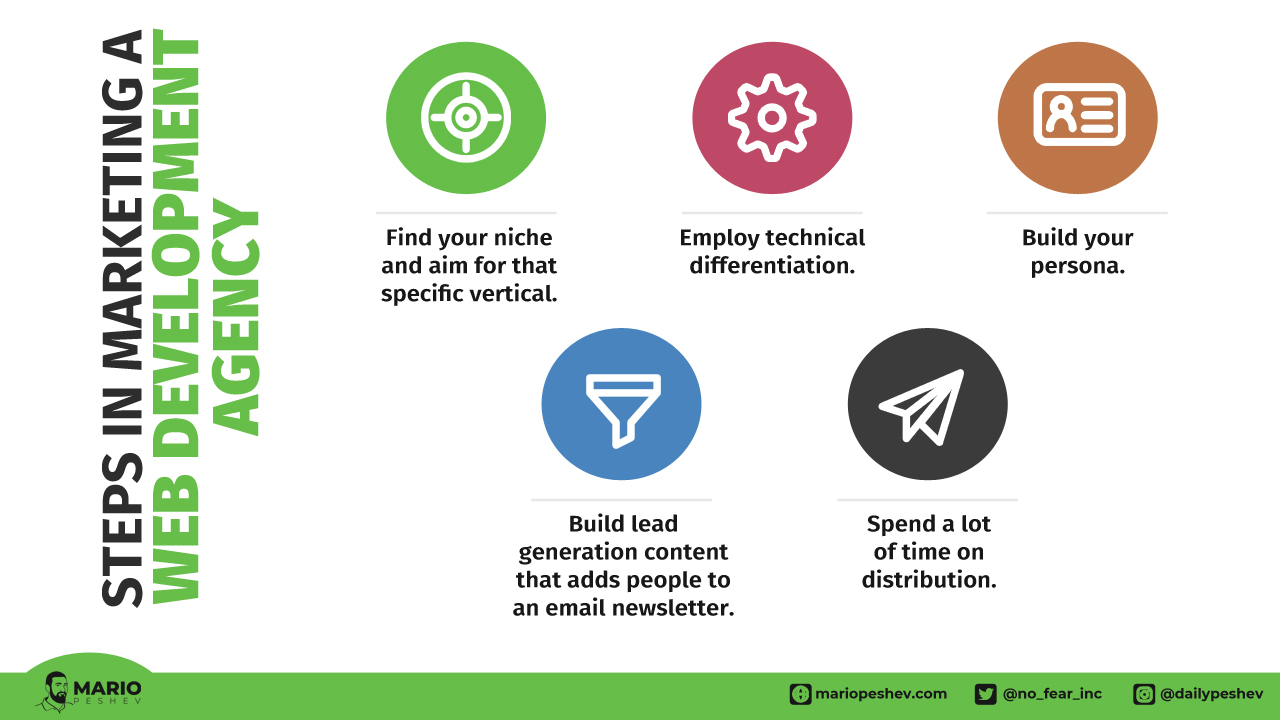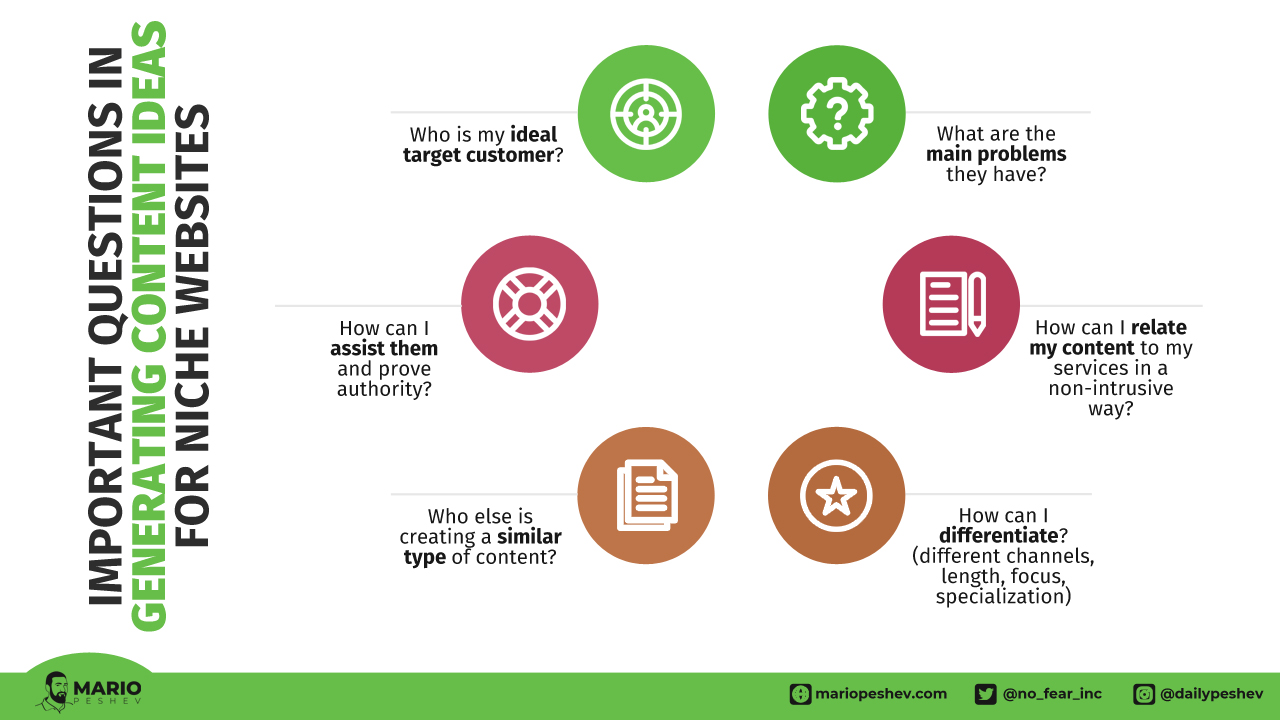Selling to businesses locally or internationally usually entails selling services or products.
Products are a bit easier since you can provide a trial version of your product and broadcast it everywhere. Products are also well-defined, you can easily outline the scope of your product and draft several case studies tackling specific problems.
Services are different. If you offer a wide range of services for different audiences, you need to niche down.

What Does It Mean to Niche Down?
To put it simply, niching down means to pick a specialty and a specific target market for your business.
For a new startup, starting small with a niche is often a great option.
You have limited resources — time, staff, money — and you want to generate decent conversion rates within your constraints.
The first step is picking the best niche for you and branding your entire product around it, thus building a branding niche.
According to “The Palgrave Encyclopedia of Strategic Management” building a niche brand means targeting the specific needs of small segments of consumers. Niche brands have a smaller market share compared to the larger brands but they often enjoy higher levels of loyalty, although they can only penetrate so little of the market share.
Brands that choose the narrow road require niche marketing for optimal returns. But how does niche marketing work and how can you effectively use this approach for your business?
Benefits of Niching Down

Focusing on a specific target market has certain perks.
Unlike other vendors, you can gain some industry knowledge which could be applicable to your clients.
For instance, building a dentist appointment software application for several local businesses will teach you the specifics of the dental business — What are the regular process and the preferred ways appointments are scheduled? What are the popular software applications used by dentists? This reduces the learning curve (and the margin of error) when compared to working with a random vendor.
How Does Niche Marketing Work?

At this point, we will discuss further how you can take advantage of niche marketing by examining different types of businesses with a niche market, particularly by studying the following two cases.
Case Study 1 – Live Editing Tool
Let’s suppose you have a business that provides an email editing service. Your target market could be universities, business executives, or email automation users. Whatever it is, your entire web presence must revolve around that niche.
Your marketing efforts would be focused on that niche market as well. Identify your ideal personas and create designated cards describing your most suitable audience.
Figure out where they hang out online and offline and meet them in any way possible. Contact them directly, spend the time on onboarding (free trials work best), make sure their experience is outstanding and collect reviews.
You’ll be able to replicate (or even automate) the process and expand through word of mouth and testimonials.

The other option is branding your homepage (and the entire service) as a generic live editor. This may be beneficial in the long run but more challenging (expensive and exhausting) at first.
The alternative here is to follow the same process via designated niche landing pages tackling each important industry of yours. This would let you experiment with 2 or 3 niches and see which one is the best fit for your business – until you grow and can accommodate other verticals as well.
Let’s take the senior management niche as an example.
Senior managers are often in charge of emails (all day long) and some suck at grammar or picking the right expressions in any case. You can approach them on LinkedIn or find them at different business conferences, still tackling a chunk of them (a specific industry).
You can brand it as a live editing service that produces:
- Excellent grammar updates in each and every email.
- Available templates for different situations (meeting a new client, status update, C-Suite memo).
- Phrase suggestions for different types of businesses.
- VIP support plan for live interaction with editors.
- Coaching sessions (another upsell of the service).
- A set of webinars for starters (warming up managers before they sign up).
- Video recordings including struggling managers and how your product helps them.
You can see how the context changes the perception of your brand and the focus of your marketing message.
Technically, you’re able to build all of those collateral and additional features for different niches, but you may lack the resources at first. Starting with smaller niches and expanding further may be an easy and safe bet. Validating the potential of a niche will also take less time – whereas you can decide if you want to venture into another niche instead.
Case Study 2 – WordPress Development Agency
Three years ago I studied the WordPress ecosystem and discovered over a million WordPress service providers. Given that competition is fierce, differentiation is paramount.
But WordPress also powers over 35% of the web. And that’s why you need to find the cross-section and focus on it.

Find your niche and aim for that specific vertical. There are bloggers, magazine editors, small eCommerce shop owners, legal firms, education sites… The list goes on. Niche content always converts better as it’s more focused (your audience can relate to it).
Technical differentiation. It may be a good idea to specialize in a specific framework (theme or plugin) or a type of plugin (like BuddyPress, bbPress, WooCommerce, Gravity Forms) that’s been adopted by millions of websites. This should be in line with your work and your focus (building free plugins or extensions for that specific audience).
Build your persona. Know who you are aiming for. Are they photographers? Marketing directors? Entrepreneurs? Business developers? CEOs of 10-person companies? Understanding your audience means that you will only focus on their problems. Speak their language. Use their jargon. Relatable content helps build an audience and a brand.
What do you want to convey? Write technical tutorials and target CTOs of agencies that want to outsource to you. The same goes for marketing, product management, design, and front-end – your content should be consistent but also in line with your audience.
We have 4 different buyer personas and write 4 different types of content – but that’s feasible with 7 marketers working for us. Each category is extracted in a separate section and discusses the problems of our ideal customer.
One persona is a CTO of a tech company which is why we have some technical content as well. That also helps with selling to IT companies building mobile or desktop software (or anything else) but doesn’t have WordPress expertise in-house. Yet, they want to ensure that we know our stuff (which is why we also maintain 30+ free plugins and have 6 full-time core contributors). It’s a combined effort.
Build lead generation content that adds people to an email newsletter. Some people prefer to gain followers on social media instead (which makes sense in some cases). Work on ebooks, whitepapers, case studies, research guides, checklists or anything else worth downloading which is relevant to your copy.
Spend a lot of time on distribution. This should be ongoing as long as you work on evergreen content.
If you’re serious about it, it will work. But according to Neil Patel and Eric Siu on their Marketing School Podcast, if you’re just starting, it may take 18–24 months until you start seeing some results. It’s a competitive field with tens of millions of posts published daily worldwide.
Content Marketing for Niche Websites

Coming up with content ideas is a long and thorough process that depends on your sales and marketing strategy.
- Who is my ideal target customer?
- What are the main problems they have?
- How can I assist them and prove authority?
- How can I relate my content to my services in a non-intrusive way?
- Who else is creating a similar type of content?
- How can I differentiate? (different channels, length, focus, specialization)
The list is not exhaustive. But that’s what it takes to find your target market.
Now, depending on what the niche is, ~10 similar sites don’t sound like a lot of competition unless that traffic corresponds to hundreds of thousands of news entries/articles that may take you a decade to catch up with.
The best way to start is setting up a business plan including a more detailed competitor research – think of feature analysis, amount of data, the volume of users, social media followers in all active networks and the like. Find a correlation or two as an indicator of what makes the top 3 sites the most popular ones, what dimensions you need to excel at and the channels you need to promote at.
Even though you’re neglecting the monetization question, for the time being, this may be crucial to your long-term growth depending on your initial plan. You’ll most likely need to commit full-time to the project in order to succeed or even hire several content writers, a social media marketing person, or other folks running research studies, maintaining your email lists and curating content and so forth.
Unless you happen to have 6 figures or more just lying around, figuring out the long-term plan is essential in order to ensure sustainability. This may be related to advertisements, or partnerships, or reselling premium content, upselling other services, affiliate campaigns and the like. Users hate when rules are changing, and some get zealous and even vengeful when they feel as a site owner is trying to change the rules of the game mid-season.
Additionally, you need a certain level of innovation – be it a custom type of content such as videos, infographics, ebooks, some photo contests; or exploring other mediums for distributing data.
As a summary, if your analysis of your competitors is reasonable and you can project the required efforts and resources (manpower + time + costs for tools, hosting, web platform, etc) in a financially reasonable manner, then sure, go ahead and conquer the top.
Selling to Niche Markets
In terms of the actual sales process, find out where your customers are. Do they search exclusively on Google (or maybe Bing?) Are they on Facebook or LinkedIn? What are the most common magazines or newspapers they read? Are there any international conferences worth attending?

As soon as you define your buyer persona and their behavior, you can target those specific outlets.
- If your clients tend to participate in certain Facebook groups, try to join them and provide some help for free.
- Or, if they read a niche industry magazine, build relationships with the editors or sponsor an ad slot.
- If they organize business meetups, try to attend one, sponsor it, or find someone local who would be willing to attend (you can offer a reseller commission).
- Now, if they search for specific terms, make sure you blog regularly and produce actionable and valuable content for them. Build a decent website including testimonials, case studies, and references.
- Guest post at online blogs tackling industry problems.
- Freelance networks and job sites may work, too. Craigslist included.
As long as your value proposition makes sense, some of them would respond to your inquiries.
There are lead generation companies offering email lists or phone numbers for specific niches. You can achieve that by using LinkedIn’s Sales Navigator as well. Connect with your leads, build relationships, and offer value and this will lead to some business relationships.
It’s not a quick process for sure – it’s building up your reputation (and business brand) for the future.




